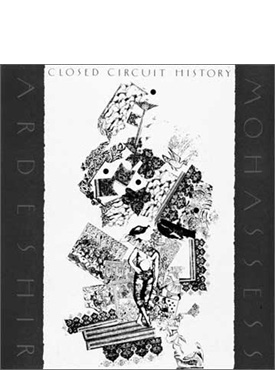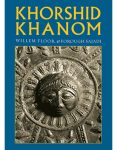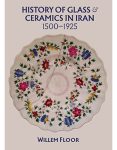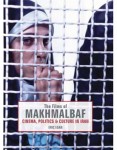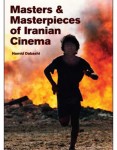About the Book
Closed Circuit History is a record of Iran’s eternal landscape of the past and a retrospective of an important Iranian artist. Ardeshir Mohassess is an artist of the first order, and as with all true artists he is an antenna and decoder of the society in which he lives. With rare skill and insight, using a few strokes, he communicates the truth of our experience. He has been drawing since the age of three, and although he received his degree in political sceince and law from the University of Tehran, his real interest was to draw his field, rather than practice it. His drawings were first published in Iran in the early 1960s and have continued to appear since, both in Iranian and Western newspapers, including The New York Times, The New York Review of Books and Graphis. Today, besides many private collectors and museums, The Library of Congress is also collecting Ardeshir’s drawings.
In a perceptive and culturally sensitive forward, fromer US Attorney General and advocate of constitutional rights Ramsey Clark sets the historical background enabling the unfamiliar Westerner to appreciate Ardeshir’s art. Ali Banuazizi, professor of social psychology and modern Iranian history at Boston College, with brilliant simplicity and deep uinderstanding, introduces us to Ardeshir Mohassess, the artist, his life, and work.
Reviews
“A collection of intriguing drawings by one of Iran’s foremost graphic artists, currently living outside the country. Mohassess’ art is intended to force viewers to examine and question political developments taking place in Iran.”
– – Middle East Journal
Excerpt
Introduction
Ardeshir Mohassess is recognized internationally as Iran’s leading caricaturist and graphic artist. Yet, as the powerful images on the following pages show, neither appellation fully describes the breadth, depth, intricacy, and complexity of his art and vision.
The artist himself also defies simple description. Through his art one sees him as a man of sharp and angry perception who wields his sarcastic pen mercilessly decapitating bodies, twisting them into unnatural shapes, turning the world upside down all in an attempt to expose the bitter truth that lies, he seems to feel, under the banal surface of everyday reality. In person, Mohassess is a remarkably sensitive, humble, and mildmannered man with a philosophic sense of humor that focuses not on the foibles of particular individuals, but on what he finds to be the pathetic or absurd in the human condition.
Born in Rasht, in northern Iran, on September 9, 1938, Mohassess grew up in an artloving family. The main influence in his early life, he says, was his poetess mother, whose endless supply of funny stories, invented mostly on the spurofthemoment for her children, helped enrich his imagination. She and Ardeshir’s older brother were the major sources of support and encouragement to him as a young artist. He began to draw early, before he could even verbalize his ideas. He recalls that once, at the age of three, when he returned from seeing a movie, he was asked what the movie had been about. Rather than describing the film, he drew several sketches depicting the scenes that had impressed him the most. “Since that time,” he says, “it has been much easier for me to express my thoughts and feelings in my drawings than in any other form.”
Mohassess has never studied art formally. After completing his secondary education, he was ranked first among all the applicants to the University of Tehran Faculty of Fine Arts. But he decided to study law at the same university, thinking perhaps that he might follow his father’s career as a judge. Compared to his earlier years at school, which he had hated with a passion, he found life at the university much less onerous, particularly as he could devote most of his time to his art and still get by academically. On the few occasions when he attended class, he found it far more interesting to sketch the professor’s gestures and movements than to take notes. His baccalaureate degree in political science and law, as he wryly puts it, “was only to add a bit of glamour to my curriculum vitae.” Upon graduation, a position of librarian in a government office, where few made use of his services, provided an unparalleled opportunity for several hours of reading each day. As with his art, he preferred self education to formal study.
In the early 1960s, Mohassess’s caricatures and other drawings began to be published in Iran. Since then, his works have appeared in both Iranian and Western newspapers and magazines. His drawings have been widely exhibited in Iran (until the 1979 revolution) and abroad by private galleries as well as several major museums. Leading graphic arts magazines, such as Graphis (Switzerland), Graphic Design and Idea (Japan), Graphic (West Germany), and Communication Arts (U.S.), have featured his provocative works, and more than fifteen collections of his drawings, as well as several books on his art, have been published in Iran, Europe, and the United States.
In his drawings, be they detailed tableaux or simple, primitive sketches, Mohassess quite literally dissects his characters with his pen and then peels away the conventional facade to expose the underlying reality of his world a world of injustice and anguish, of domination and subjection, of pettiness, gluttony, and arrogance, and of tyranny and cruelty.
It is also a world in which sexuality particularly in its sadomasochistic manifestations is stripped of all sentimentality and strikingly exhibited. His search is not for the essential characteristics of a particular individual or situation, but for a universal essence shared by all. He does not exaggerate in order to poke fun, but rather penetrates and reveals in order to jolt his viewers into a heightened awareness. His sharp and critical eye and his often grotesque and always satirical articulations make us wince in recognition of the terrifying and pervasive meanness that lurks beneath the surface. The laughter he evokes is uneasy, the kind that often turns into a gasp.
One of Iran’s great contemporary poets, Ahmad Shamlu, once wrote, “Ardeshir’s sketches are not ‘caricatures.’ If we are to take `caricature’ to be an ironic exaggeration of facts then Ardeshir is most certainly not a caricaturist. At least for us, the neighbors and fellowsufferers of the familiar faces in his works, Ardeshir will, in his capacity as an artist, remain a sharpsighted realist a portraitist of facts, a painter of history.” (Introduction, Current Events: Drawings by Ardeshir Mohassess, Tehran, 1972; in Persian). To him his work is “above all a form of personal notetaking, especially of nature, either directly or indirectly through photographs, old paintings, etc. My work,” he adds, “has the quality of a report. I try to provide as faithful an account of my surroundings as I can.”
Mohassess thinks of his work as falling into two main categories: works that are detailed, complex, intricate, and often rendered in a thickly shaded style, and those that are drawn in a few simple strokes. The former, he feels, “have a more static quality and are influenced mostly by old Persian paintings and religious and folk art.” The second, and by far the larger category, consists of simple sketches. He seems to prefer the latter, adding that he likes the simpler, more primitive forms, especially when looked at from the point of view of execution: “With the minimum available means I can draw any number of them anywhere.”
Indeed Mohassess does draw everywhere. His day begins at 6:30 in the morning and continues well into the late evening. Even when he leaves his studio for long walks in Lower Manhattan, where he spends many nightime hours frequenting his favorite cafes, he is never without his pen and drawing pad. He often seems so consumed by his work and oblivious to everything else that one wonders how he possibly manages the daytoday chores of living alone. Some years ago, when he found new inspiration for his work in the cabaret, he spent hours every night at Tehran’s few cabarets, sketching every movement of the dancers and the clown, and the bedazzled expressions of the customers. By closing time, the artist was often as exhausted as the performers.
More recently, Mohassess has produced a series of drawings which are a departure from his usual style. Colorful, lighthearted and gay, they look like modern versions of classical Persian miniatures. Working with color is not entirely new for him. A number of his earlier works are also rendered in color, though the color technique in them is relatively harsh and somewhat perhaps deliberately unsophisticated. “For a long time,” he says, “I did not use color. Perhaps this was due to the fact that my immediate environment and the city in which I lived [Tehran] were not particularly colorful. When I first went to Paris, I fell in love with its enthralling beauty and colorfulness. The entire setting of buildings and people’s faces were multicolored and seemed to have been painted in harmony together. You could see the four seasons in one day. This made me notice color and opened new vistas to me. Since then I have used color whenever I thought the occasion demanded it, mostly with crayons, pastels, or watercolors. I have even been tempted to try oil paint from time to time. Perhaps I will someday.” But whether in color or black and white, Mohassess’s work eludes easy categorization, especially within the framework of Western artistic tradition. Though not in the tradition of grotesque or primitive art, some of his paintings and drawings borrow from both. In his own inimitable way, Mohassess synthesizes various traditions and styles to create his unique world.
“As a whole,” he says, “folk art and primitive art, illustration from nineteenth century Persian books, old paintings, wall paintings, native American art, news pictures and personal photographs, and the hidden satire of Eastern miniatures are the main influences on my work. Even my simple sketches are composites of these elements. Literature, too, has had a powerful influence on me. Samuel Beckett, who I remember reading over twenty years ago, is a good example.” Like most artists, Mohassess has a profound sense of cultural identity, which manifests itself in all aspects of his work. While making it clear that he has never deliberately tried to give his work “local color,” he feels that, as an Iranian artist with a strong sense of nostalgia, he is more at home when working with Iranian folk themes.
In the course of the decade and ahalf when he worked as a professional artist in Tehran, Mohassess produced a plethora of politically inspired drawings and cartoons that won him universal acclaim among the Iranian intelligentsia, but provoked and angered the authorities and, on occasion, the Shah himself. When, for instance, his dismembered, deformed, and mutilated figures were seen to be suggestive of torture suffered by political prisoners, he was warned that his works would be banned if he were to persist in his fantasies of horror. On other occasions, to prevent people from reaching the wrong conclusions from his works, he was asked to provide descriptive captions of his drawings. In spite of these pressures, he managed to work at a feverish pace until he left Iran in 1976 for what was at that time to be a temporary stay in the United States. With the outbreak of the Revolution in 1978, and later the consolidation of clerical power, it became apparent that his undaunted form of truth would not be tolerated under the new Islamic regime. Hence, in spite of his unquestionable sympathy for the Revolution, he chose to live in exile like scores of other Iranian artists and intellectuals. New York City has provided the combination of anonymity, isolation, and a few kindred spirits that he has always coveted. But, it could hardly escape anyone who knows Mohassess and his work that his main source of inspiration and energy continues to be the Iranian culture where his creative imagination still dwells. The drawings in this collection represent some of Mohassess’s most powerful and highly acclaimed works. Dealing with Iran’s turbulent and often tragic modern history, they demonstrate his trenchant and penetrating perception of Iranian political culture and character and establish him not only as Iran’s most accomplished graphic artist, but also as a social critic with a healthy distrust of all powerholders, an antipathy toward a blind acceptance of social mores and conventions, and, above all, an unswerving commitment to freedom and social justice.

